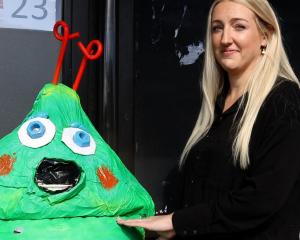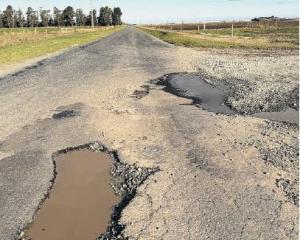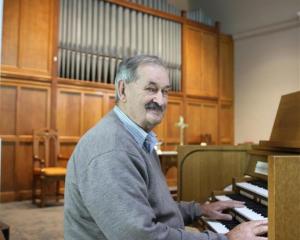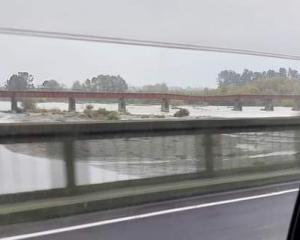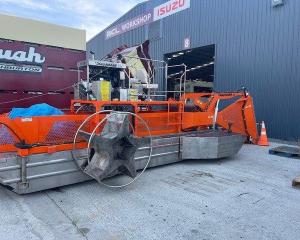
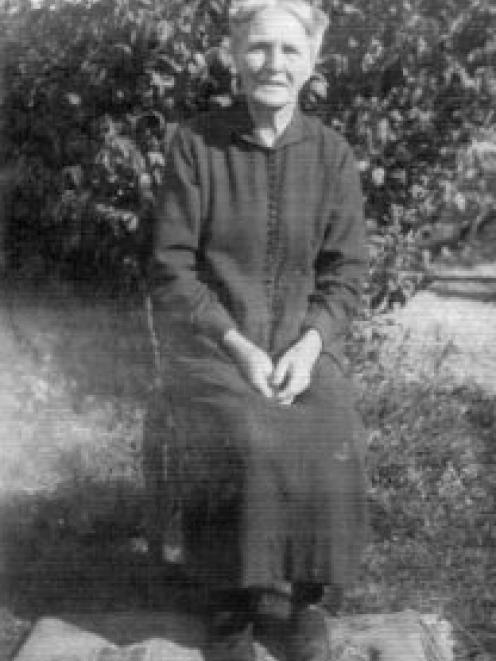
It was given by Lorna Collison, Margaret’s granddaughter, who lived with her in her last years, to her cousin Avis Wilson, nee Hood, and has been transcribed by Mrs Wilson and her daughter Pam Wilson.
Another family member, Susan Wright, a great-granddaughter through the Winifred Hood/Tweedy family line, has researched pieces from local newspapers to give an extra dimension and flavour of the times.
Margaret Hood (nee Johnstone) was born in Scotland in 1858 and emigrated to New Zealand with her family in 1863 on board the ship Brother’s Pride.
Her father was a shepherd initially at Lake Heron Station and then at Clent Hills.
Margaret married John Hood in 1877 and they started married life in the accommodation house in Mt Somers.
She and John had nine children, one of whom died as an infant.
Pam Wilson said Margaret lived a long and full life in Mt Somers.
“While we have only this one diary from her last year, it conveys a great deal about life in a rural district during World War 2.
“She refers to many of the Hood and Johnstone family members of the time, neighbours and friends and indirectly describes the strong community life they lived during the war.”
Margaret lived in the family home, named Holmwood, with her youngest son (Les) and his wife in her latter years and a number of relatives lived nearby.
The diary details relatives away at war overseas and some in the Home Guard.
There are also daily weather reports, domestic duties like washing and gardening, local fund-raising and war efforts and how transport was affected by petrol rationing.
There are also entries detailing some of the socialising that went on in the Foothills.
Mrs Hood died of breast cancer at aged 85 and is buried in the Mt Somers cemetery alongside her husband, who she survived by 18 years.
Copies of the 98-page transcribed diary have been given to the Mt Somers Museum and Ashburton Museum. Different branches of the Hood family have also been contacted to see if they are interested in having a copy of it
Anyone interested in obtaining a copy can email to Pam.wilsonnz@outlook.co.nz
-By Mick JensenA transcribed diary from the late Margaret Hood offers an insight into rural life in and around Mt Somers during World War 2.
The diary contains entries from the start of 1943 until Margaret’s death in October of that year.
It was given by Lorna Collison, Margaret’s granddaughter, who lived with her in her last years, to her cousin Avis Wilson, nee Hood, and has been transcribed by Mrs Wilson and her daughter Pam Wilson.
Another family member, Susan Wright, a great-granddaughter through the Winifred Hood/Tweedy family line, has researched pieces from local newspapers to give an extra dimension and flavour of the times.
Margaret Hood (nee Johnstone) was born in Scotland in 1858 and emigrated to New Zealand with her family in 1863 on board the ship Brother’s Pride.
Her father was a shepherd initially at Lake Heron Station and then at Clent Hills.
Margaret married John Hood in 1877 and they started married life in the accommodation house in Mt Somers.
She and John had nine children, one of whom died as an infant.
Pam Wilson said Margaret lived a long and full life in Mt Somers.
“While we have only this one diary from her last year, it conveys a great deal about life in a rural district during World War 2.
“She refers to many of the Hood and Johnstone family members of the time, neighbours and friends and indirectly describes the strong community life they lived during the war.”
Margaret lived in the family home, named Holmwood, with her youngest son (Les) and his wife in her latter years and a number of relatives lived nearby.
The diary details relatives away at war overseas and some in the Home Guard.
There are also daily weather reports, domestic duties like washing and gardening, local fund-raising and war efforts and how transport was affected by petrol rationing.
There are also entries detailing some of the socialising that went on in the Foothills.
Mrs Hood died of breast cancer at aged 85 and is buried in the Mt Somers cemetery alongside her husband, who she survived by 18 years.
Copies of the 98-page transcribed diary have been given to the Mt Somers Museum and Ashburton Museum. Different branches of the Hood family have also been contacted to see if they are interested in having a copy of it
Anyone interested in obtaining a copy can email to Pam.wilsonnz@outlook.co.nz
-By Mick JensenA transcribed diary from the late Margaret Hood offers an insight into rural life in and around Mt Somers during World War 2.
The diary contains entries from the start of 1943 until Margaret’s death in October of that year.
It was given by Lorna Collison, Margaret’s granddaughter, who lived with her in her last years, to her cousin Avis Wilson, nee Hood, and has been transcribed by Mrs Wilson and her daughter Pam Wilson.
Another family member, Susan Wright, a great-granddaughter through the Winifred Hood/Tweedy family line, has researched pieces from local newspapers to give an extra dimension and flavour of the times.
Margaret Hood (nee Johnstone) was born in Scotland in 1858 and emigrated to New Zealand with her family in 1863 on board the ship Brother’s Pride.
Her father was a shepherd initially at Lake Heron Station and then at Clent Hills.
Margaret married John Hood in 1877 and they started married life in the accommodation house in Mt Somers.
She and John had nine children, one of whom died as an infant.
Pam Wilson said Margaret lived a long and full life in Mt Somers.
“While we have only this one diary from her last year, it conveys a great deal about life in a rural district during World War 2.
“She refers to many of the Hood and Johnstone family members of the time, neighbours and friends and indirectly describes the strong community life they lived during the war.”
Margaret lived in the family home, named Holmwood, with her youngest son (Les) and his wife in her latter years and a number of relatives lived nearby.
The diary details relatives away at war overseas and some in the Home Guard.
There are also daily weather reports, domestic duties like washing and gardening, local fund-raising and war efforts and how transport was affected by petrol rationing.
There are also entries detailing some of the socialising that went on in the Foothills.
Mrs Hood died of breast cancer at aged 85 and is buried in the Mt Somers cemetery alongside her husband, who she survived by 18 years.
Copies of the 98-page transcribed diary have been given to the Mt Somers Museum and Ashburton Museum. Different branches of the Hood family have also been contacted to see if they are interested in having a copy of it
Anyone interested in obtaining a copy can email to Pam.wilsonnz@outlook.co.nz
-By Mick JensenA transcribed diary from the late Margaret Hood offers an insight into rural life in and around Mt Somers during World War 2.
The diary contains entries from the start of 1943 until Margaret’s death in October of that year.
It was given by Lorna Collison, Margaret’s granddaughter, who lived with her in her last years, to her cousin Avis Wilson, nee Hood, and has been transcribed by Mrs Wilson and her daughter Pam Wilson.
Another family member, Susan Wright, a great-granddaughter through the Winifred Hood/Tweedy family line, has researched pieces from local newspapers to give an extra dimension and flavour of the times.
Margaret Hood (nee Johnstone) was born in Scotland in 1858 and emigrated to New Zealand with her family in 1863 on board the ship Brother’s Pride.
Her father was a shepherd initially at Lake Heron Station and then at Clent Hills.
Margaret married John Hood in 1877 and they started married life in the accommodation house in Mt Somers.
She and John had nine children, one of whom died as an infant.
Pam Wilson said Margaret lived a long and full life in Mt Somers.
“While we have only this one diary from her last year, it conveys a great deal about life in a rural district during World War 2.
“She refers to many of the Hood and Johnstone family members of the time, neighbours and friends and indirectly describes the strong community life they lived during the war.”
Margaret lived in the family home, named Holmwood, with her youngest son (Les) and his wife in her latter years and a number of relatives lived nearby.
The diary details relatives away at war overseas and some in the Home Guard.
There are also daily weather reports, domestic duties like washing and gardening, local fund-raising and war efforts and how transport was affected by petrol rationing.
There are also entries detailing some of the socialising that went on in the Foothills.
Mrs Hood died of breast cancer at aged 85 and is buried in the Mt Somers cemetery alongside her husband, who she survived by 18 years.
Copies of the 98-page transcribed diary have been given to the Mt Somers Museum and Ashburton Museum. Different branches of the Hood family have also been contacted to see if they are interested in having a copy of it
Anyone interested in obtaining a copy can email to Pam.wilsonnz@outlook.co.nz
- By Mick Jensen



